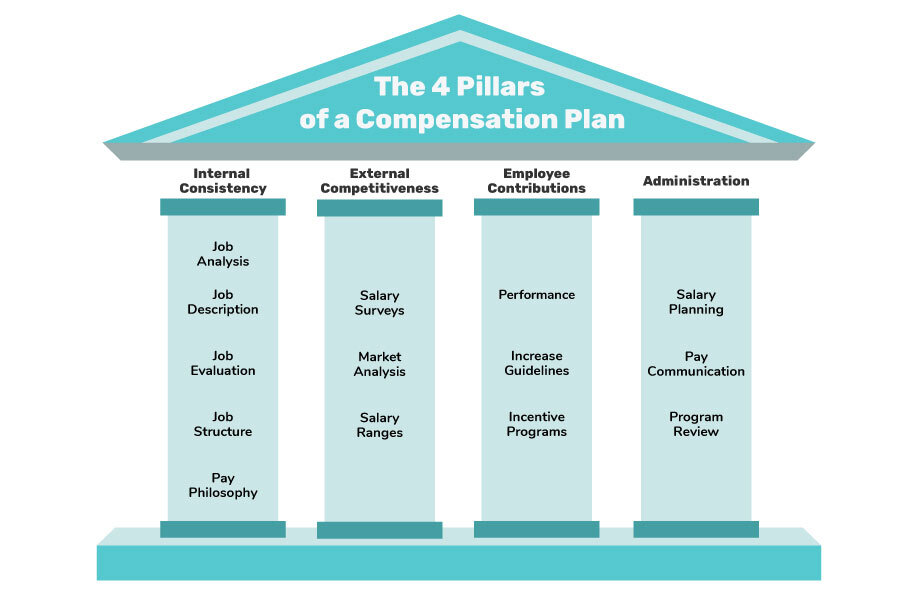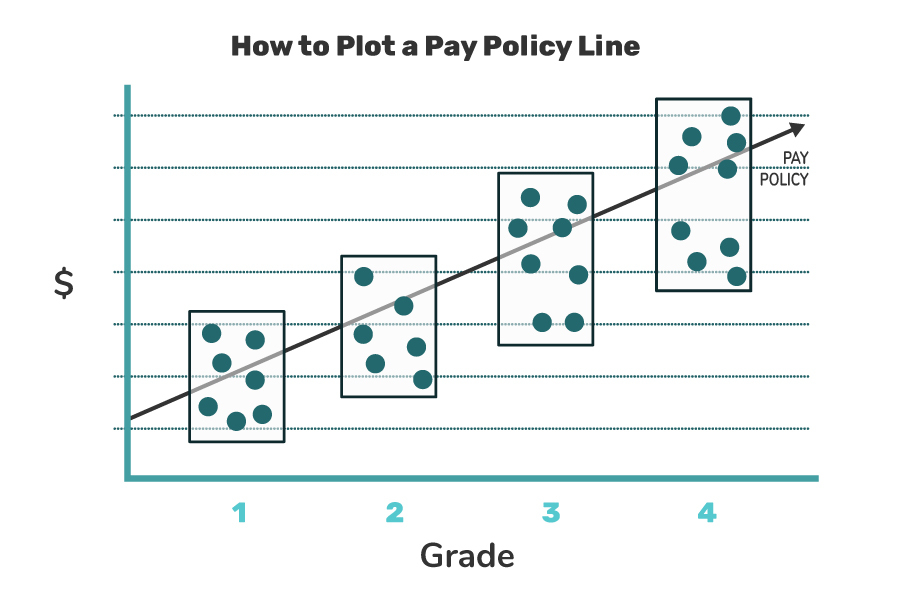📖Applauz Book Club is a series that outlines noteworthy ideas from popular books on the topics of work, HR strategy, and management. To see last month’s Applauz Book Club article, click here.
Pay is critical for employee loyalty. Yet every business faces this dilemma; salaries are the biggest cost center of a company. This uncomfortable truth puts companies at odds with employees.
So how can companies overcome this challenge? Is there a way businesses can ensure their employees are paid enough to motivate them to stay while simultaneously controlling costs?
David Weaver, author of the 2020 book Pay Matters believes that this can be achieved. Yet, a reactive approach won't work here. Employee compensation must be deliberate and systematic in order to achieve this goal.
The art & science of compensation
A long-established HR consultant, Weaver offers readers guidance on creating the "perfect" compensation system. Or, as he says, "near perfect compensation system," as compensation is both an art and a science. An idea he stresses multiple times in this book.
Your compensation plan serves more than just a business purpose; it's a reflection of your company culture.
Weaver guides readers through the four pillars of compensation–internal consistency, external competitiveness, employee contributions, and administration. He takes a careful, step-by-step approach, somehow making a seemingly dry topic of employee compensation and making it clear, digestible, and even fun to read.
This book contains valuable information for all HR and business leaders, as Weaver insists your people feel it when they're underpaid. Your compensation plan serves more than just a business purpose; it's a reflection of your company culture. In other words, developing a robust compensation program is vital to employee happiness, engagement, and retention.
The purpose of this article is to provide a high-level overview of the four pillars and the key exercises within each. Hopefully, this will give you a snapshot of what it takes to build a strong compensation program and offer a taste of the book. If you want to read the entire thing, you can buy it here.

Pillar 1-Internal Consistency
The first step in the pillar may be the most tedious–it’s a lot of work to document and analyze every job, but Weaver insists it’s like building the foundation of your home. It’s essential.
And he warns he’s worked with companies that skipped this step they wind up discriminating against people. Doing this analysis from the ground up is critical to avoiding legal trouble down the road.
Job Analysis
In the first exercise of this pillar, every job in your company should be analyzed systematically, classified, and documented. The goal here is to gather information about the elements in each role that influence compensation. What he calls “compensable factors.”
Compensable factors include:
- Skill level (i.e. education, experience, technical skills) required to do the job.
- The physical and mental effort required.
- Level of responsibility and accountability.
- Working conditions.
Compensation should reflect these factors. Weaver offers suggestions on how HR teams can go about collecting this data in an objective and accurate manner.
Job Descriptions
Once you have collected your data, it’s time to organize it in the form of job descriptions. A job description may seem like only a tool for attracting candidates, but Weaver asserts it should be the basis for everything compensation. It should serve as a guideline for performance reviews, coaching, employee development and more.
For example, If you have a job description for every position in your organization, you can show everyone what the next level up looks like for them and what they need to do to get there. Job descriptions can do wonders to stimulate growth and motivation.
Job Evaluation & Structure
The task in this step is to place concrete values on every job in your organization and rank them in the hierarchy. A job's value should be determined by two factors: the value the job brings to your organization and also what the individual contributes (i.e. experience, skill, education, etc.). Once you have this information, you can start building your internal hierarchy of jobs.
Pay Philosophy
A pay philosophy is a core approach for your compensation program. Establishing a pay philosophy is crucial because it will provide the foundation for your compensation plan. There are three basic pay philosophies, to pay below market, at the market, and above market. Once you decide on your core pay philosophy, it should remain consistent and transparent across all the roles in your organization.
Pillar 2-External Competitiveness
Now that you have done your internal analysis, you can move toward the broader job market. The goal of this second pillar is to understand the external job market so you can compare your internal rates to the salaries offered by other companies.
Salary Surveys
You can collect competitive market pay data by participating in credible salary surveys. Weaver states many companies want the ease and value of survey data without giving any of their info up. Still, you should participate. Participating in salary surveys allows your company to be a good citizen in the HR community. And most importantly, improve your reputation and attract and retain a productive workforce.
Market Analysis
Many people believe that market salary is definitive and not open to interpretation. But Weaver warns market analysis is not a science, “you can’t look at numbers from a market analysis and take it as gospel.” For example, average salaries for any given role, like software engineer, might vary from company to company. Even if you average it out, that number is not set in stone. Weaver insists you need to look at that number and interpret, judge, and evaluate it to your desired pay philosophy to determine what it means for your organization.
Salary Ranges
Weaver recommends that within each position, there should be four to six levels, otherwise called “pay grades.” People want growth. Rather than looking at these levels as an extra cost, look at it as saving money by keeping employees on board and showing them how they can bring the organization more value; and, by extension, increase their pay.
That said, if you zero on each level, they should have a minimum, maximum, and midpoint salary range. The goal of this exercise is to develop a “pay policy line,” You do that by looking at every role in your company, assigning different levels of advancement within that role, grouping the salary ranges for each level together, and finding the mid-point for each level, as illustrated in the graph below.

Pillar 3-Employee Contributions
By now, your salary ranges for each level of each role should be clear. But the job is not done. We have yet to answer how employees can climb from one level to the next.
This third pillar is critical; it provides a clear path for employee growth and development. This process benefits both the employer and employees.
The goal is to create a system that rewards employees based on merit, not biased metrics. As such, performance standards must be developed as a first step.
Performance Evaluation
Performance evaluation is the foundation of this third pillar. You can only claim pay or promotions are tied to performance if your company evaluates employees against objective standards that are consistent across all roles. In this chapter, Weaver unpacks why so many companies struggle and fail with this process and how that affects employee compensation and, consequently, employee happiness. And he offers many of the best practices companies should follow to build effective performance evaluation systems.
Increase Guidelines
Most organizations claim to pay for performance, but Weaver insists that most of the time, it's not true. To actually pay for performance fairly and consistently, you must develop an objective process. Using this method, you'll be able to determine when and by how much employees will receive raises; he calls this system "merit increase guidelines."
There is a greater sense of fairness and transparency when clear guidelines are in place; employees understand exactly why they received a raise or not.
Establishing a clear, unbiased system for pay increases is essential. Besides making administration and cost control easier, this system keeps employees motivated and happy. There is a greater sense of fairness and transparency when clear guidelines are in place; employees understand exactly why they received a raise or not. And most importantly, they know exactly what level of performance they need to reach to earn a salary increase.
Incentive Programs
Weaver encourages readers to develop incentive programs outside of employee base compensations. “People love being recognized for their hard work,” he said. These types of reward and recognition programs entail offering a mix of informal and formal rewards for good work. Weaver recommends a budget of 0.5-1% of payroll dedicated to recognition and rewards.
Pillar 4-Administration
The final pillar is all about implementation, which Weaver warns is just as essential as the first three pillars. It covers the planning process for rolling out a new salary system and communicating it clearly and openly to employees.
Salary Planning
In this chapter, Weaver outlines how to control costs. It’s crucial to analyze your salary program costs, not just for now but also for the future. For example, if, based on your market analysis, you determined you must increase salaries by 3% next year, you need to be able to forecast whether or not you’re meeting that goal within budget.
Pay Communication
Weaver stresses just how important pay transparency is to employee engagement. When companies are transparent about how employees can attain higher compensation and exactly what they need to do to get there, it is incredibly motivating and engaging, especially for top performers.
Program Review
Last but not least, Weaver notes the importance of evaluating the effectiveness of your compensation strategy on a regular basis. This entails communicating with managers
and employees to understand how the system impacts their engagement and satisfaction.
Final Thoughts
Compensation is a core component of a well-rounded employee engagement strategy. Yet, ensuring salary costs are controlled is vital for business success. It's a tough balancing act. Not to mention the legal considerations when it comes to pay.
Weaver admits that building a strong compensation program is a challenging endeavour. Yet he hopes readers will grasp the necessity of building this critical system from the ground up. With this book, Weaver shows us it is possible to strike a balance that works for both the company and its employees.
About the author
 Michelle Cadieux
Michelle Cadieux
Michelle is a content writer for Applauz. She holds a Bachelor's degree in Psychology from Concordia University, and she has been writing about work and employee happiness for over five years.



